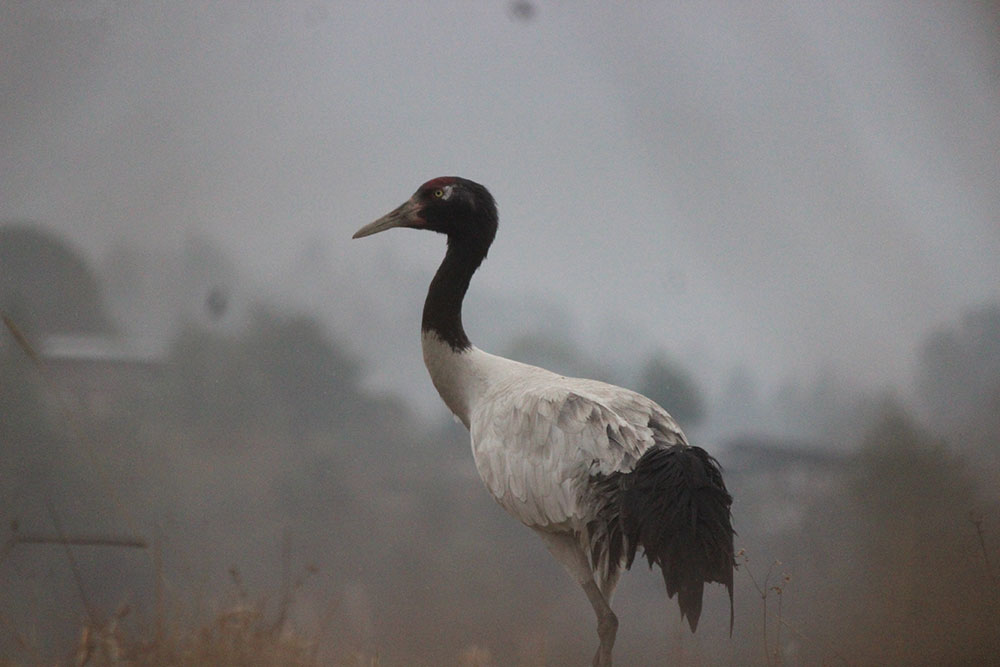Nima Wangdi | Bumdeling
Villagers in Bumdeling gewog say that the number of black-necked cranes (BNC) visiting Bumdeling in Trashiyangtse is decreasing over the years because conservationists are scaring them.
They say that the foresters scare the endangered birds, because they catch them for collaring.
Thukten Tshering from Douling village said a team of foresters is still in the valley catching cranes. “There were 62 cranes initially, but now there are only 22. The cranes left in the past few days because they were scared. Some returned.”
He said that the cranes roost on the other side of the river, facing his house. He keeps counting them every morning. “I think the cranes left out of fear.”
Thukten Tshering said the conservationists are scaring the birds. “I am worried that we are losing our cranes now. The number started declining from the time they started catching the cranes.”
Another villager, Singye Dorji, 45, said when a crane is caught, it struggles and other birds fly away out of fear. “I think the scared birds do not return the subsequent years. It is true that the number declined after foresters started catching them.”
He said other reasons could be the declining feeding grounds, as the flood has covered paddy fields in recent years.
An elderly woman from Ngalimang village said cranes used to fly in flocks when she was in her 20s, but it’s rare today. “Cranes crowed at specific times and followed the timing strictly. The villagers followed their time during the winters.”
The chairman of Thrung Thrung Namsung Tshogpa, Choki Dorji, said villagers try to protect the cranes, but conservationists are scaring them. “The cranes are smart and they get scared of even a small thing.”
Villagers said they do not know what the conservationists are doing and if their activity is going to benefit in conserving the cranes in Bumdeling.
Cranes caught for research
The park ranger of Bumdeling wildlife sanctuary (BWS), Sangay Drukpa, said Ugyen Wangchuk Institute for Conservation and Environment Research, Royal Society for Protection of Nature, and BWC are conducting research on the cranes.
He said they are attaching GPS to the cranes to track where they live in their summer roosting place and also see where they feed even after coming to Bhutan during the winter.
He said the collared cranes return to Bhutan. “It is not true that the cranes are not returning after they are scared. It could be a little disturbance to the birds though.”
There are 65 BNCs in Bumdeling this year.


